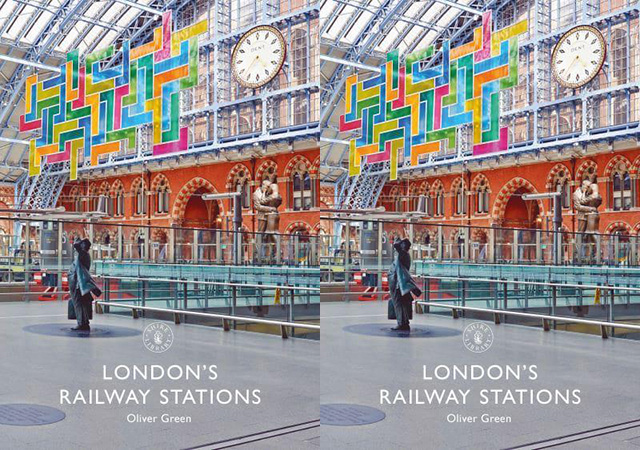London’s Railway Stations
Book review

London’s Railway Stations, Oliver Green, Shire Publications, 2022, 64p, £9.99. ISBN 978 1 78442 505 0
Genuinely authentic Londoners will be familiar with all thirteen of its railway terminuses and this book, by a recognised expert on London’s railway provision, provides an excellent introduction to the topic which will now enable everyone else to share that appreciation and perspective.
Having travelled from ten of these stations and visited two more, only Fenchurch Street is wholly outside my experience. My visit to Marylebone was to appreciate its magnificent architecture and my visit to Blackfriars was to examine its famous international destination panel which revealed that its links went as far as St Petersburg. Of course, London Bridge Station, the earliest terminus, has been the focus of travel for my family from as far back as both of my great-grandfathers, with my maternal great-grandfather becoming a commuter to London Bridge from East Croydon as early as 1850 and my paternal great-grandfather operating as a self-employed coachman from London Bridge Station, and other central terminuses, from the 1880s. My own principal experience has been of the complexities of using Victoria Station and of using St Pancras and Euston as my means of returning to the Midlands.
Oliver Green, in a very crisp manner, enables the reader to understand the essential details of each of these stations, with explanations about their origins, their design, their changing roles over nearly two hundred years and their present-day functions. Throughout he introduces us to the cultural and artistic elements that interact with railway life, such as advertising and changing public priorities, such as, for example, the temporary adaptation of Waterloo Station to embrace the Eurostar and the subsequent re-vitalisation of St Pancras as the final destination of the Channel Link.
This is a delightful book, well-illustrated, and likely to encourage the reader to progress to Oliver Green’s other more detailed railway books.

